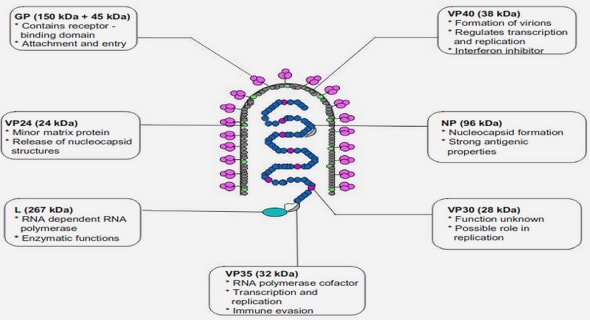Get Complete Project Material File(s) Now! »
Mortality
Cleland and van Ginneken24 using the results of multivariate analysis of data from 16 countries presented by Hobcraft et al.25 demonstrate that shifts in the reproductive pattern (as measured by birth interval, birth order and maternal age) cannot explain the education/ child mortality relationship. However, Behrman26 using data that permits control for the education of a woman‟s siblings, finds the education effect had nearly disappeared. One interpretation of this finding is that the previously reported effects of maternal education may simply be the effect of unobserved familial abilities and motivation passed on to the daughter by mother.
Zerai28 examined socioeconomic and demographic variables in a multilevel framework to determine conditions influencing infant survival in Zimbabwe. She employed Cox regression analysis to study the socioeconomic determinants of infant mortality, based on data from the Zimbabwe Demographic and Health Survey conducted in 1988. The most unique finding was that women‟s average educational levels in their community exert a greater effect on infant survival than the individual mother‟s educational level. This result supports assertions that child survival is strongly impacted by mass education.
Health Care Seeking Practices
Lavy42 analyses the effects of quality and accessibility of health services and other public infrastructure on the health of children in Ghana. Incorporating some community characteristics the author constructed an indicator of poor water quality and sanitation. Focusing on child survival, height and weight, the results suggest an important role for public health policy in eliminating the rural-urban disparities, particularly in improving health status of rural children as well as reducing their mortality rates. While the higher socioeconomic status of better-educated women explains about half of the magnitude of the relationship between maternal education and child survival24, the domestic health practice of individual women is probably the new most salient mechanism in the maternal education – child mortality relationship. The fact that mother’s education is a more important determinant of child survival than father’s education is probably due to greater maternal involvement in childhealth related care.
Concluding Remarks
This section presented an overview of literature on maternal, socioeconomic and environmental determinants of childhood mortality. It also presented the theoretical concepts around the concept of frailty in this section. The determinants of childhood mortality have been extensively researched in most parts of the world as evidenced by numerous published articles. However, little research has been conducted in Zimbabwe in spite of the fact that it has one of the highest infant and child mortality rates in the world.
Concluding Remarks
This chapter discussed the literature review and the conceptual framework. It was noted that the Mosley and Chen framework is a relevant framework for this study. However since the Mosley and Chen framework was developed before HIV/AIDS had reached epidemic stages, HIV prevalence will have to be included in the Cox proportional hazard models in order to study its impact on infant and child mortality. The discussion on the literature review included evidence on the interplay between various relevant demographic and socioeconomic variables. It is clear from the review of the literature that the Cox proportional hazards model was little used in the study of the determinants of infant and child mortality in Zimbabwe. The rationale for the study is to fill this gap in the literature, firstly, by describing in detail the childhood mortality levels and trends in Zimbabwe; and secondly, by employing survival analysis (Cox proportional hazard models) to examine the determinants of infant and child mortality in Zimbabwe from 1996 to 2005.
Source of Data
The study used data collected from the 2005-06 ZDHS survey. The 2005-06 ZDHS survey collected data from a sample of 8,907 women aged 15-49 years and 7,175 men aged 15-54 years.21 This ZDHS is the fourth comprehensive survey conducted in Zimbabwe as part of the Demographic and Health Surveys (DHS) programme. The DHS are a rich source of data on developing countries in general, and Africa in particular. These national probability surveys provide a wealth of information on child health, the proximate determinants of fertility, fertility preferences, and other social and economic characteristics unmatched as a source of data from developing countries.
TABLE OF CONTENTS :
- Acknowledgements
- Declaration
- Dedication
- Abstract
- Table of Contents
- List of Figures
- List of Tables
- List of Appendices
- Chapter 1 Introduction
- 1.1 Background
- 1.2 Study Purpose
- 1.3 Population, Social Development and Political Economy of Zimbabwe
- 1.3.1 Population
- 1.3.2 Political Economy
- 1.3.3 Social Setting
- 1.4 Rationale of Study
- 1.5 Objectives of the Study
- 1.6 Organisation of the Thesis
- Chapter 2 Literature Review and Theoretical Framework
- 2.1 Introduction
- 2.2 Review of Literature
- 2.2.1 Trends in Under-5 Mortality Including the Role of HIV/AIDS
- 2.2.2 Determinants of Childhood Mortality
- 2.2.2.1 Introduction
- 2.2.2.2 Mortality
- 2.2.2.3 Morbidity
- 2.2.2.4 Health Care Seeking Practices
- 2.2.3 Theoretical Perspectives of Frailty
- 2.2.4 Concluding Remarks
- 2.3 Theoretical Framework
- 2.4 Concluding Remarks
- Chapter 3 Data and Methods
- 3.1 Introduction
- 3.2 Source of Data
- 3.3 Model Specification
- 3.3.1 Dependent Variable
- 3.3.2 Independent Variables
- 3.3.3 Outcome Variable
- 3.4 Statistical Methods
- 3.5 HIV Prevalence Estimates
- 3.6 Direct and Indirect Demographic Techniques
- 3.7 Multiple-spline Regression
- 3.8 Quality of the Data used in the Mortality Measurement
- 3.8.1 Introduction
- 3.8.2 Completeness of Age at Death Reporting
- 3.8.3 Age Distribution of Women in the Reproductive Age group
- 3.8.4 Age-specific Average Parities
- 3.8.5 Under-reporting of Live Births
- 3.9 Test of the Cox Proportional Hazards Assumption
- 3.10 Concluding Remarks
- Chapter 4 Levels and Trends in Infant and Child Mortality in Zimbabwe
- 4.1 Introduction
- 4.2 Analysis and Interpretation of Mortality Levels and Trends Using Direct Estimates
- 4.2.1 Neonatal and Postneonatal Mortality Levels and Trends
- 4.2.2 Infant, Child and Under-5 Mortality Levels and Trends
- 4.2.3 Comparison of Infant and Under Mortality Rates for Periods 0-4 and
- 5-9 years Preceding four ZDHS Surveys
- 4.2.4 Mortality Differentials by Sex of Child
- 4.2.4.1 Neonatal and Postneonatal Mortality Differentials by Sex
- 4.2.4.2 Neonatal to Postneonatal Mortality Ratios
- 4.2.4.3 Infant Mortality Differentials by Sex
- 4.2.4.4 Child Mortality Differentials by Sex
- 4.2.4.5 Infant to Child Mortality Ratios
- 4.2.4.6 Under-5 Mortality Differentials by Sex
- 4.2.5 Mortality Differentials by Rural-Urban Residence
- 4.2.5.1 Infant Mortality Differentials by Rural-Urban Residence
- 4.2.5.2 Child Mortality Differentials by Rural-Urban Residence
- 4.2.5.3 Under-5 Mortality Differentials by Rural-Urban Residence
- 4.2.6 Mortality Differentials by Province
- 4.2.7 Regional Variations in Childhood Mortality
- 4.3 Direct and Indirect Childhood Mortality Estimates
- 4.4 Estimated Mortality Levels and Trends using Direct and Indirect Estimates and Multi-spline Regression
- 4.5 Trends in Adult Mortality
- 4.6 Trends in HIV Prevalence Rates
- 4.7 Concluding Remarks
- Chapter 5 Results of the Bivariate Analysis
- 5.1 Introduction
- 5.2 Description of the Covariates
- 5.2.1 Maternal Variables
- 5.2.2 Socioeconomic Variables
- 5.2.3 Environmental Contamination Variables
- 5.2.4 Personal Illness Control Variables
- 5.3 Bivariate Proportional Hazards Regression Models
- 5.3.1 Impact of Maternal Covariates on Infant and Child Mortality
- 5.3.2 Impact of Socioeconomic Covariates on Infant and Child Mortality
- 5.3.3 Impact of Environmental Covariates on Infant and Child Mortality
- 5.3.4 Impact of Personal Illness Control Covariates on Child Mortality
- 5.4 Comparison of 2005-06 ZDHS with Two Other ZDHS surveys
- 5.5 Impact of HIV/AIDS on Infant and Child Mortality
- 5.6 Concluding Remarks
- Chapter 6 Determinants of Infant and Child Mortality: Results of Multivariate Hazards Analysis
- 6.1 Introduction
- 6.2 Infant Mortality
- 6.2.1 Impact of Maternal Variables on Infant Mortality
- 6.2.2 Impact of Socioeconomic Variables on Infant Mortality
- 6.2.3 Impact of Environmental Contamination Variables on Infant Mortality
- 6.2.4 Impact of Maternal, Socioeconomic and Environmental Contamination Variables and HIV/AIDS on Infant Mortality
- 6.3 Child Mortality
- 6.3.1 Impact of Maternal Variables on Child Mortality
- 6.3.2 Impact of Socioeconomic Variables on Child Mortality
- 6.3.3 Impact of Environmental Contamination Variables on Child Mortality
- 6.3.4 Impact of Maternal, Socioeconomic and Environmental Contamination Variables and HIV/AIDS on Child Mortality
- 6.4 Concluding Remarks
- Chapter 7 Determinants of Infant and Child Mortality: An Analysis Controlling for Family and Community Frailty Effects
- 7.1 Introduction
- 7.2 Measurement of the Family and Community Frailty Effect
- 7.3 Family and Community Frailty Models
- 7.3.1 Infant Mortality
- 7.3.1.1 Family Clustering Model
- 7.3.1.2 Community Clustering Model
- 7.3.2 Child Mortality
- 7.3.2.1 Family Clustering Model
- 7.3.2.2 Community Clustering Model
- 7.4 Concluding Remarks
- Chapter 8 Discussion of Findings, Conclusions and Recommendations
- 8.1 Introduction
- 8.2 Summary and Discussion of Major Findings
- 8.2.1 Levels and Trends of Infant and Child Mortality
- 8.2.2 Determinants of Infant and Child Mortality
- 8.2.2.1 Maternal Variables and Mortality
- 8.2.2.2 Socioeconomic Variables and Mortality
- 8.2.2.3 Environmental Contamination Variables and Mortality
- 8.2.2.4 HIV/AIDS and Infant and Child Mortality
- 8.2.3 Frailty Hazard Models
- 8.3 Conclusions
- 8.4 Limitations
- 8.5 Recommendations
- REFERENCES
GET THE COMPLETE PROJECT
Social and Economic Factors Influencing Under-Five Mortality in Zimbabwe During 1996-


